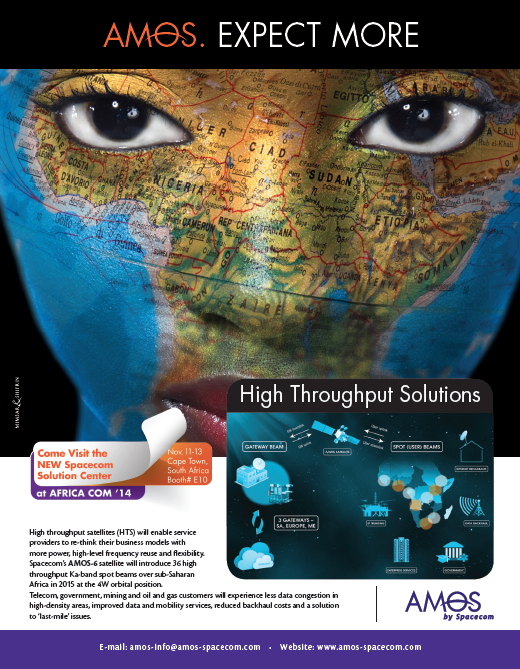Looking to reduce their dependency on fossil fuels, utilities are turning to green energy sources such as solar and wind power for cost effective and flexible alternatives for increasing their power generation capabilities.

In 2006, the U.S. Department of Energy, in collaboration with various industry organizations, embarked on a study to determine the feasibility of supplying at least 20 percent of the nation’s electricity from wind power by 2030. According to a recent report from the American Wind Energy Association (AWEA), 15 wind energy projects have been completed and are online since the start of 2014, with another 109 projects underway as of mid-year.
On the solar front, more than 475,000 solar energy systems were interconnected in the U.S. at the end of 2013; a number that is projected to reach one million by the end of 2017, according to the Solar Electric Power Association.
Quite apparent is that affordable, clean power is helping to reduce the cost of energy for homes and businesses across many regions of the United States. For utilities, this has the potential of adding new challenges to the mix. Many solar and wind energy assets are located in remote locations and over challenging terrain, far removed from the core operations of a utility company. This introduces the need for broadband connectivity for applications, such as system monitoring, to help manage the variability of renewables or to protect and monitor physical assets through video surveillance.
These new challenges to the communications network must be balanced with traditional ones, such as processing the growing volume of data and managing supervisory control and data acquisition (SCADA) devices. When looking at bringing these remote locations for green power generation into the core network, along with existing coverage for remote substations or backup services in case of an emergency, utilities are seeing increased value in satellite communications as part of their overall communications toolkit.
Answering the Connectivity Questions
Despite the broad use of satellite communications in utility networks, some consistent questions seem to always surface when it comes to the capabilities of a satellite solution. Many of these questions stem from the use of legacy satellite as opposed to the modern VSAT solutions that are offered in the market today.
Let’s address each question with the appropriate answers as far as the solutions being delivered by satellite today.
Latency
Question: Is the latency of satellite too great to support core applications?
Answer: While current satellite systems are slightly more latent than terrestrial broadband, the difference is only a few hundred milliseconds. In fact, the latency of satellite is low enough to meet the requirements of nearly every core utility application. Furthermore, when addressing more bandwidth-intensive applications such as video surveillance, VoIP and real-time monitoring applications, satellite technology with built-in acceleration and quality of service (QoS) can ensure reliable performance regardless of the IP-based application.
Cost
Question: Is the cost of bandwidth in the space segment becoming more competitive to typical terrestrial-based coverage?
Answer: Satellite offers flexible options for utilities to own, manage and deploy networks with low upfront capital investment and minimal operational expenses. TDMA provides an efficient way to transport data as each site requires it, without the need to strand bandwidth per site.
The promise of high-throughput satellites (HTS) will elevate this discussion to an entirely different level. By introducing more bandwidth, higher power and frequency reuse, HTS will bring down the cost of the space segment and increase bandwidth availability.
Reliability
Question: Can satellite provide the necessary reliability/availability?
Answer: Satellite networks have become highly reliable and capable of providing at least 99.95 percent availability. A couple of key advancements guarantee the availability of the satellite link in both directions.
Adaptive TDMA is used on the inbound (remote site to the core network) and increases the reliability of the transmission by providing a mix of available carriers. This process enables each remote to select the best inbound carrier (modcod and symbol rate) based on its current operating environment. As remotes move within a satellite contour, or as atmospheric conditions change, A-TDMA allows the remote to frequency hop to the best inbound carrier that a particular remote can access. With A-TDMA, a network no longer needs to be designed for the worst performing remote terminal in the network.
Adaptive Coding and Modulation (ACM) is similar to A-TMDA, but is used on the outbound (core network to remote site). This process allows each remote to achieve the maximum data throughput by utilizing the most efficient coding and modulation scheme dependent upon the location within the satellite contour, antenna size, and atmospheric conditions.
VSAT sites are one hop away form the hub, which eliminates multiple network elements, transitions and points of entry.
The question of reliability also incorporates weather-related incidents that can degrade the reliability of a satellite connection. Up Link Power Control (UPC) is a two-way process, between the hub and remotes that provides real-time compensation for fading events due to weather. This process controls remote power levels to keep them within expected limits. UPC is similar to automatic transmit power control (ATPC) used in point-to-point microwave radios.
Security
Challenge: Is satellite just as secure as other access technologies?
Response: AES 256 encryption has become an option on satellite, with remotes and hubs containing the same information. Many technology companies are also working with third-party virtual private network (VPN) providers to add an additional layer of security to the discussion.
A Definitive Answer for Utilities
Smart energy today means a growing volume of data and the requirement of new assets located in remote locations. Utilities have always had a robust toolkit to solve communications challenges, comprised of fiber, point-to-point microwave, and lease services. As the communications requirements continue to expand for utilities, this toolkit should also include satellite communications. Advancements in satellite communications can enable a utility to overcome new challenges, while enjoying the benefits of reliability, ease of deployment, and network reach.
iDirect’s network is built to deliver all the aforementioned answers. Some of the largest utility customers in the world are using iDirect’s technology to manage multiple aspects of their operation.
With advancements in technology, adjustments to pricing models, and migration towards a unified IP network, satellite has the correct answers to the question of why SATCOM should be used for communication in the utilities space. More info @ http://www.idirect.net

About the author
Kris Jarrett is a Sr. Systems Engineer with iDirect, and he is a subject matter expert within the Energy and Utility vertical. Mr. Jarrett is responsible for educating Energy and Utility customers on the viability of VSAT technology and solving challenges related to mission-critical networks. Prior to joining iDirect, Kris served in the United States Air Force for nine years, working with Satellite, Microwave, and Fiber Optic communications systems. He also worked as a Wireless Integrator, explored the Fuel Cell market, and was the Utility Solution Architect at Alcatel-lucent, where he focused on solutions for the Energy and Utility industries. Kris has been in the telecommunications industry for over 20 years, spanning a wide range of technologies.



